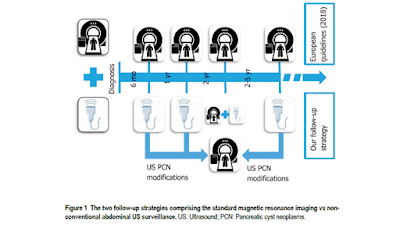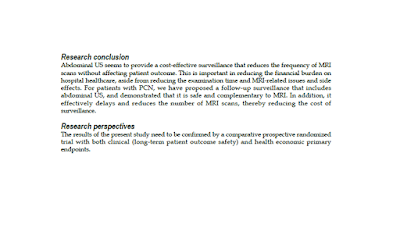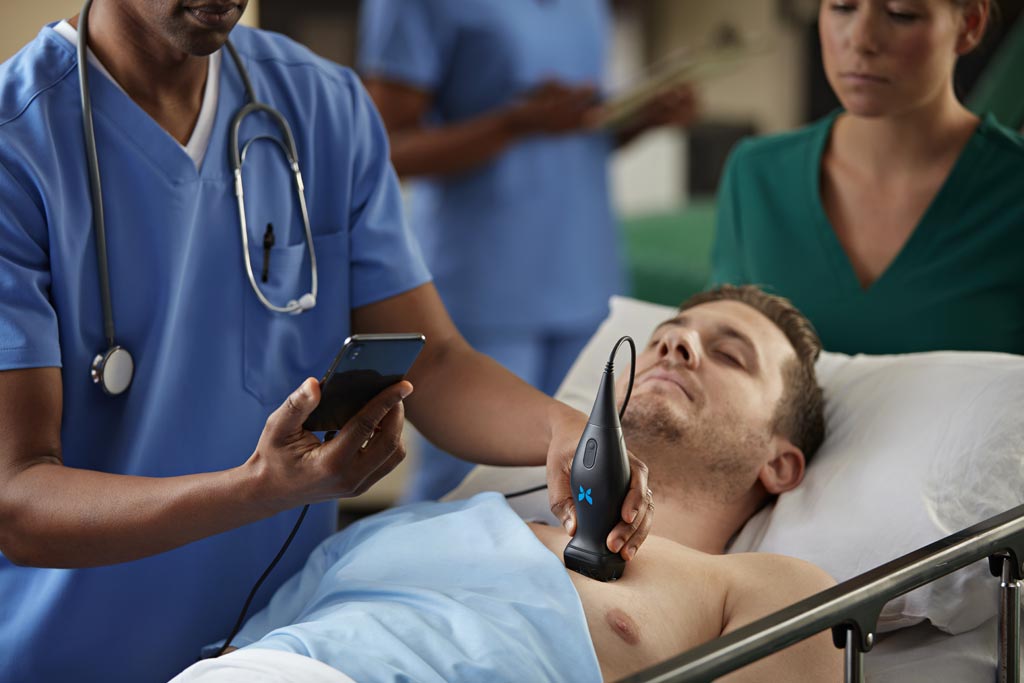ATHENS, Greece — A small but groundbreaking randomized trial has strengthened the case for lung ultrasound (LUS) examinations, which can show likely subclinical pulmonary congestion, in outpatients with heart failure (HF).
The blinking appearance of "B lines" on LUS images, an artifact caused by echo differences between tissue and accumulated fluid, is a confirmed diagnostic and prognostic indicator of congestion. More B lines, also called ultrasound lung comets for the way they streak across the scan from the pleural line, mean more fluid.
The current study suggests the lines could potentially serve as a target for managing volume-depletion therapy, in that adding diuretics in response to them might improve clinical outcomes.
There was a marginally significant 48% decline in 6-month risk for a clinical composite primary endpoint, driven by a more highly significant 75% drop in urgent clinic visits for worsening HF in recently discharged patients whose outpatient diuretic therapy was guided by B lines on LUS.
Scans were obtained using highly portable, pocket-sized systems in all patients, and clinicians who used their findings to adjust diuretics in those assigned to guided therapy didn't follow a defined treatment protocol.
Because of that, the patient population numbering only about 120 from one center, the marginal primary outcome, and other reasons, the study dubbed LUS-HF is more food for thought than an endorsement of LUS-guided HF therapy.
"We propose lung ultrasound as a tool to complement clinical examination and to detect subclinical congestion," said Mercedes Rivas-Lasarte, MD, Hospital de la Santa Creu i Sant Pau, Barcelona, Spain, during the presentation of LUS-HF here at European Society of Cardiology Heart Failure (ESC-HF) 2019.
"The lung-ultrasound guided strategy was safe and reduced the number of decompensations," Lasarte said. "We think that lung ultrasound is a rapid, easy, inexpensive, and broadly available tool that may be recommended in heart failure follow-up to improve outcomes."
However, regarding the use of B lines on LUS to guide diuretic therapy, Lasarte added, "We have to take our study as a proof of concept, and we think that multicenter studies are needed to confirm our results and to test harder endpoints."
Even though there was no treatment protocol in the study, how clinicians managed diuretics for the patients was a good reflection of real-world practice, said Peter S. Pang, MD, Indiana University, Indianapolis, an emergency physician and early adopter of LUS in patients with HF.
The trial's primary endpoint, which included mortality and urgent clinic visit or rehospitalization for worsening HF, may have been significantly reduced in the LUS-guided group, "but I think we need to be careful how we interpret the positive trial because it was driven only by urgent heart-failure visits," Pang, who was not involved in LUS-HF, told theheart.org | Medscape Cardiology.
Still, that can be important. "I think it's fair to say that many patients don't want to come back to the doctor to say they feel worse. So perhaps by using lung ultrasound as a measure of congestion, we can make patients feel better."
Lung ultrasound is safe and it sharpens diagnosis and prognostic evaluations, "so adding it to the bedside examination is strongly encouraged," Pang said.
As for whether resolution or improvement of B lines on serial lung scans after diuretic intensification predicts improved clinical outcomes, "the jury is still out."
The reported number needed to treat with LUS-guided therapy to avoid one primary endpoint was a mere five patients, Pang had pointed out earlier as the invited discussant following Lasarte's presentation.
That indicates an absolute risk reduction of 20%, "an impressive finding, in fact so impressive that we should be cautious. It is unlikely such an effect size would be observed in other populations or in larger studies," he said.
"The good thing about this technology is that it's very easy to do. It's noninvasive, and once you have the ultrasound in your hand, there's no additional cost to it," Mandeep R. Mehra, MD, Brigham and Woman's Hospital, Boston, who is not connected to LUS-HF, observed for theheart.org | Medscape Cardiology.
Although he is cautious about the magnitude of its significance, "this study is at least a step in the right direction. But it's small study, and its confounding by detection of a problem is not to be ignored," he said. That is, because all the patients received LUS, clinicians treating those in the control group could potentially have become aware of and been influenced by the ultrasound findings.
"I always look at these kinds of data with some degree of skepticism."
The LUS-HF design specified that only clinicians who treated patients in the guided-therapy group would have access to the ultrasound results. Treating physicians could take their lead from the scans on any treatment adjustments.
Indeed, they "were strongly directed to change treatment in relation to number of B lines," Lasarte said when presenting LUS-HF.
The trial included 124 patients recently discharged from hospitalization with a primary diagnosis of acute HF. They were required to have had dyspnea and X-ray evidence of pulmonary congestion, high age-adjusted natriuretic peptide levels, but no severe lung diseases.
They were randomized single-blind prior to discharge to receive standard care with guidance from LUS in 61 patients and without LUS guidance in 63 patients. The groups were similar at baseline with respect to mean left-ventricular ejection fraction, natriuretic peptide levels, cardiovascular and pulmonary comorbidities, 6-minute walk distance, and number of B lines on LUS.
Natriuretic peptides were measured and LUS performed thereafter at 2 weeks, 1 month, 3 months, and 6 months.
Six-month rates for death or urgent clinic visits or rehospitalization for worsening HF were 23% in the LUS-guided group and 40% in the control group, for a hazard ratio (HR) of 0.52 (95% CI, 0.27 - 0.99; P = .046).
There were no significant differences in natriuretic peptide levels, measures of quality of life, or the individual components of the primary endpoint except for urgent visits for worsening HF, a prespecified secondary endpoint.
Six-Month Secondary Endpoint Outcomes, LUS-HF
| Endpoints | LUS Guidance, n = 61 | Non-LUS Guidance, n = 63 | P |
|---|---|---|---|
| Urgent visits for worsening heart failure, % | 5 | 21 | .008 |
| Change in 6-minute walk distance, m | +60 | +37 | .023 |
| Proportion receiving loop diuretics, % | 91 | 75 | .023 |
Other potential applications for LUS using hand-held ultrasound systems in the chronic HF setting, Pang said, include use in a broader population to monitor for signs of impending decompensation, in the hope that early therapy can avoid hospitalization. "The promise for that is great," he said.
"It's not going to replace things like history or physical exam, but maybe it's another thing to add that helps us better decide how to treat patients. That's what I think it adds more than anything else."
Lasarte has reported no relevant financial relationships. Pang has previously disclosed consulting for Baxter, Bristol-Myers Squibb, and Novartis; and receiving support from Bristol-Myers Squibb, Roche, Novartis, Ortho Diagnostics, and Abbott. Mehra has previously disclosed being a consultant for Abbott, Portola, Bayer, and Xogenex; a trial steering committee member for Medtronic and Janssen; a scientific advisory board member for NuPulseCV and FineHeart; and a data safety monitoring board member for Mesoblast; and receiving travel support from Abbott.
ESC-HF 2019. Presented May 25, 2019. Late breaking trial I, Abstract 25.
Follow Steve Stiles on Twitter: @SteveStiles2. For more from theheart.org | Medscape Cardiology, follow us on Twitterand Facebook.
Medscape Medical News © 2019 WebMD, LLC
Send comments and news tips to news@medscape.net.
Cite this: Ultrasound 'Lung Comets' Reveal Subclinical Congestion, Hint at Treatment-Target Value in HF Outpatients - Medscape - May 27, 2019.




















